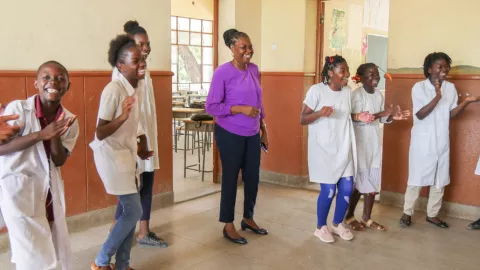Methodological Briefs on Evidence Synthesis
Series of 8 briefs, 2020
About
This series of eight briefs, produced by the UNICEF Office of Research – Innocenti, is intended to provide guidance on how to undertake, commission and manage evidence synthesis products such as systematic reviews, rapid evidence assessments and evidence gap maps. Evidence synthesis can play an important role in UNICEF’s knowledge management and evidence translation efforts by collating knowledge from multiple studies on what interventions work, and why and how they work. It makes research more accessible and therefore can contribute to evidence-informed programming and policy decisions. The primary audience for these briefs is professionals, including UNICEF staff, who conduct, commission or interpret research and evaluation findings in development contexts to make decisions about policy, programming and advocacy.
Brief 1: Provides an overview of a series of eight briefs that cover a range of evidence synthesis products that can contribute to different parts of the policy and programming cycle and strengthen evidence informed decision-making at UNICEF.
Brief 2: Considers three different types of evidence synthesis products – namely, systematic reviews (SRs), rapid evidence assessments (REAs) and evidence gap maps (EGMs) – and how they differ and compare in terms of their uses and the time and resources needed for their application. It also provides guidance on how evidence synthesis can contribute to evidence informed decision-making, which is particularly important in the context of UNICEF’s evidence infrastructure and for ensuring that appropriate evidence is considered when making policy and programming decisions.
Brief 3: Covers the development and design stages of producing an evidence synthesis product (including the activities that contribute to drafting and refining the research question and scope), how externally contracted research teams are engaged in these stages, the type of consultation and feedback that should occur during these stages, and the development of inclusion criteria and a search strategy. All of these activities lead to the development and publication of a research protocol, which helps to ensure that all important decisions are made in advance and helps to avoid the introduction of bias.
Brief 4: Addresses the actual process of collating studies and the synthesis and analysis of these. It also includes an overview of tools and applications that can be used to help manage the process.
Brief 5: Focuses on the key activities for commissioning and managing an evidence synthesis project.
Brief 6: Focuses on emerging innovations and cutting-edge debates amongst the evidence synthesis community of practice. Unlike the other briefs, it does not give practical guidance, but, instead, highlights some of the new and critical thinking and tools employed by UNICEF Innocenti and others that are likely to influence the research commissioning or knowledge brokering process in the future.
Brief 7: Provides a list of key tools, resources, websites and organizations for evidence synthesis.
Brief 8: Contains a glossary of terms used in evidence synthesis.





